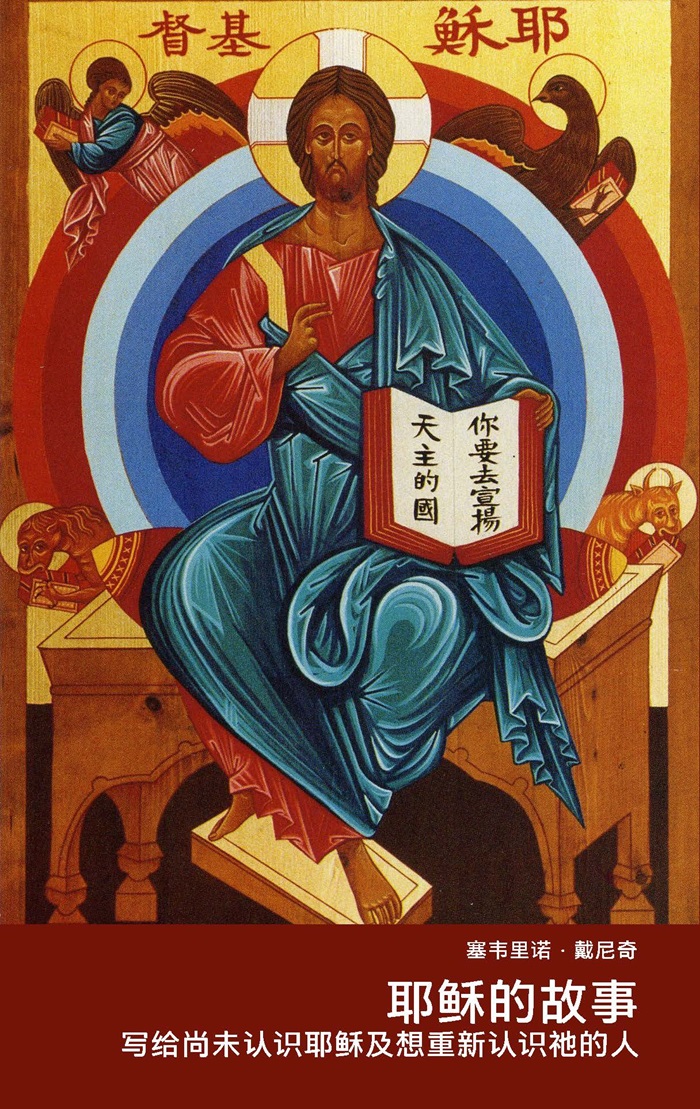Telling Jesus to Chinese tourists visiting Europe
At the conference ‘Youth and Faith in Greater China’ that AsiaNews is promoting for 3 December in Milan, the Chinese translation of theologian Severino Dianich's book ‘Jesus. A tale for those who know nothing ... or has forgotten’. A new initiative promoted by the PIME Foundation as an instrument of first evangelisation for those who approach the places of the Christian tradition in Italy and Europe.
Tomorrow 3 December - on the feast of St Francis Xavier - the PIME Missionary Centre in Milan will host a conference promoted by AsiaNews ‘ Youth and Faith in Greater China’. An appointment that will focus on the testimonies of some young people from different realities of today's Chinese world who have encountered Christ in their lives. The evening will also be an opportunity to present a new initiative promoted by the PIME Foundation: the Chinese translation of the book ‘Jesus. A story for those who know nothing... or have forgotten’ (pages 64, euro 8). It is a work by Don Severino Dianich, a priest from Pisa, one of the founders of the Italian Theological Association, which is offered as an agile aid for an initial approach to the figure of Jesus to those who - perhaps entering an Italian or European church as a tourist - wish to know more. We publish below a presentation by the editorial director of AsiaNews, Fr Gianni Criveller, who wanted this initiative.
‘Jesus. A story for those who know nothing about it... or have forgotten": This is the title of the book that Italian theologian Severino Dianich wrote a few years ago and had caught my attention. For some time, in fact, I had been thinking how to offer the many Chinese visiting cathedrals and places of Christian tradition in Italy and Europe a subsidy that would help them understand the deeper meaning of the place they were admiring, namely the Christian faith. I remember that many years ago Fr Fernando Galbiati, former Superior General of PIME, had suggested to me that there would be a need for a text in Chinese designed for the tourists who are increasingly coming to Europe from China. For almost all of them the content of the Christian faith is unknown, and a visit to the places of faith could be not only a cultural and artistic experience, but also an opportunity for evangelisation.
I have never thought of offering a synthesis of Christian doctrine or, as was done in the 19th century, a text proposing ‘the essence of Christianity’. Rather, I believe it is necessary to start from the story of Jesus. I also do this during my lessons with Chinese students at the Catholic University of Milan. Before doctrine and precepts, I am convinced that Christianity is the encounter with Jesus and the experience of friendship with him. Jesus is the very heart of the Christian faith, and we know him through the Gospels. Which are narratives. Jesus was also a teller of stories through which he communicated his message. Therefore, the literary genre of the story is the one that best describes his story and the origin of Christianity.
In the Bible there is this sentence: ‘Behold, I stand at the door and knock. If anyone hears my voice and opens the door, I will come to him'. I imagined that, through the Chinese translation of Fr Dianich's book, Jesus could discreetly knock on the reader's door so that, if he so desires, he will open the door for him. For me, this is a project in continuity with my vocation as an evangeliser among the Chinese people.
The author is an outstanding theologian and presbyter concerned with the communication of the faith. He has dedicated himself for many years to young people, especially university students. He himself was the promoter of the Chinese translation of his book. Years ago we had made a trip to China together, which had consolidated our friendship and brought Fr Severino closer to the subject of the Christian story in the great Asian country. It was not difficult to obtain from the San Paolo publisher the possibility of translating the text with the aim not of a commercial success, but an action for evangelisation.
I therefore took this initiative to heart, entrusting the translation to the scholar Maria Hsu from Taiwan, herself a guide for Chinese tourists in Rome, and asking Fr Giovanni Battista Sun, director of the Li Madou Centre (Matteo Ricci, in Macerata), to revise the translation, adapting it to the simplified characters and terminology used in the People's Republic of China. The PIME Centre in Milan then took care of the graphics and published the book, as part of its commitment to offer opportunities for evangelisation.
The cover of the book reproduces an icon by the artist and PIME missionary Father Fulvio Giuliano. The image is in Hong Kong and contains Chinese characters: it depicts Jesus, surrounded by the symbols of the four evangelists, saying: ‘You go and proclaim the Kingdom of God’ (Luke 9:60). It is an agile book - a dozen chapters for about sixty pages - aimed at those who do not know Jesus. Now it is necessary to promote it: I have contacted the Chinese communities in Italy and Europe and their chaplains, inviting them to collaborate in disseminating it in their cities. I spoke about it at two conferences in Germany and Spain. So far the response has been encouraging: some pastoral workers have told me that it is a useful text for accompanying catechumens to the faith in Europe and will be enhanced in view of the Holy Year.
For further information on the volume, you can write to desk@asianews.it
12/02/2016 15:14







.png)










